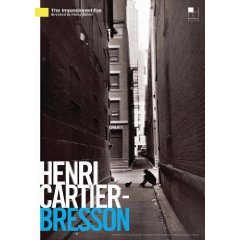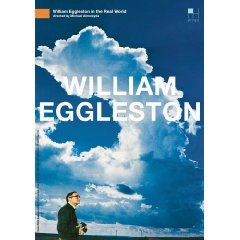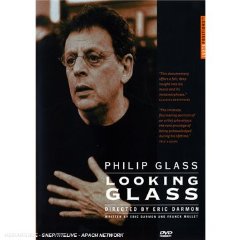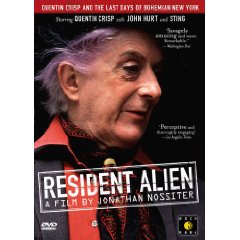DVDs with the Elders
The DVD is an “old” technology for you young cats? Fine. Let’s talk about my favorite DVDs with old cats in them! This collection of goodies includes Brahmanand Swamigal, A Palestinian Grandfather, William C. Westmoreland, Cecil Taylor, Babatunde Olatunji and Ibrahim Ferrer.
Brahmanand Swamigal
 This frame of Brahmanand Swamigal from Pan Nalin’s informative and meditative Ayurveda: The Art of Being captures him talking about his Ph.D. from Sri Lanka University. You see, kids, I don’t have any nurtured and cherished sexual fantasies. I have social fantasies that necessarily result in me having intimate relations with an excellent woman.
This frame of Brahmanand Swamigal from Pan Nalin’s informative and meditative Ayurveda: The Art of Being captures him talking about his Ph.D. from Sri Lanka University. You see, kids, I don’t have any nurtured and cherished sexual fantasies. I have social fantasies that necessarily result in me having intimate relations with an excellent woman.
So when a see an elder like Brahmanand Swamigal I eventually imagine that he must have a stunning adult daughter that is somehow charmed and completely fascinated with me. So our precious and sensual bond takes us to the same waterfall where “father” goes to meditate and we still ourselves there too… after an unknown quantity of time passes we open our eyes—our lashes glistening with beads of mist…
But let’s not ignore Brahmanand Swamigal. Yusef Progler wakes me out of fantasy in Journal of Research in Medical Sciences (May & June 2008; Vol 13, No 3: 156-157) with this:
Ayurvedic physician Brahmanand Swamigal, who insists that, “I do not treat diseases, I treat people.” The film profiles Swamigal, observing his practice and learning something of his training. From a long lineage of fourteen generations of Ayurvedic physicians, he began studying with his father at age thirteen and continued to study throughout his 55 year career, having learned specializations from 20 gurus, or masters, who used poetry as a way to aid in learning the medical principles and formulas. Many of these gurus are now deceased, perhaps pointing to the fragility of a trans-generational master-student tradition, but which is nevertheless necessary to interpret and pass on the interwoven ancient wisdoms to the younger generations.
See? No mention of his alleged incredibly attractive startlingly brilliant daughter here.
A Palestinian Grandfather
 This is a frame from Israeli filmmaker Ra’anan Alexandrowicz’s 2001 documentary, The Inner Tour. Here is my first visual experience of a Palestinian elder with living memory of his land being seized by Israeli aggression saying, “We stand steadfast, our feet embedded in our land.”
This is a frame from Israeli filmmaker Ra’anan Alexandrowicz’s 2001 documentary, The Inner Tour. Here is my first visual experience of a Palestinian elder with living memory of his land being seized by Israeli aggression saying, “We stand steadfast, our feet embedded in our land.”
The “Tour” in the title of this film refers to Palestinians, like the old man pictured above, “touring” the land that is defined as a part of Israel. In the case of this elder, he is literally visiting his ancestral land as a tourist. One very interesting scene was when he walked through an Israeli visitor center, clearly designed for under-informed tourists, with all of its museum history totally glossing over and sugarcoating his living memory. The drama of such moments is as poignant as those in other documentaries like Ishi, The Last Yahi.
William C. Westmoreland: A Commander of Racism
The next time some self-described “Asian American” kid asks in total, innocent ignorance, “Golly, gee! How come it took so long for anime to be popular in the United States?,” show that kid this still from the 1974 documentary Hearts and Minds, directed by Peter Davis.
 This still is from a multiple take of William C. Westmoreland calmly explaining why Asians do not value human life as much as white people, beginning with the words, “Well, the Oriental…” On the commentary track of the DVD, Peter Davis makes it clear that William C. Westmoreland was not “tricked” into making this blatantly racist statement as several takes were done to complete the shot—and every single time Westmoreland was asked to speak, he deliberately started right over again, “Well, the Oriental…”
This still is from a multiple take of William C. Westmoreland calmly explaining why Asians do not value human life as much as white people, beginning with the words, “Well, the Oriental…” On the commentary track of the DVD, Peter Davis makes it clear that William C. Westmoreland was not “tricked” into making this blatantly racist statement as several takes were done to complete the shot—and every single time Westmoreland was asked to speak, he deliberately started right over again, “Well, the Oriental…”
This shot is very important here in the rasx() context because what William C. Westmoreland is saying proudly in public smacks of what has been spoken privately in various forms to Euro-American kids at the American dinner table for hundreds of years. These moments are when the white elder imparts his “scientific” and “technical” information about the “real” world. The white elder says these things to protect his children and descendants of his concern from ignorance (which is, to me, ironic) and to help reinforce a “healthy” white identity to “nurture” proud white youth with “proper” self-esteem.
Out of sympathy (and, to me, comedy), Peter Davis tried to (partially) explain where Westmoreland was coming from… This shot from an old-fashioned war movie with the old soldier screaming, “Wipe ’em out…!” helps set the texture of the Westmoreland’s imagination.
There are various Hollywood reasons why (to this very day) why certain images are not made easily available to young people and why some are. Do not be fooled that Hollywood is all about what sells… And this other shot takes it to the max with the sacred white woman held captive by some Negroes as she exclaims to an Asian stereotype, “You hideous yellow monster!”
Now our innocent “Asian-American” kid might make a mistake and say, “What does Japanese anime have to do with Vietnam?” Kid, you don’t know the pop-cultural, heart and mind of Westmoreland’s generation. To really get the Westmoreland mood, in addition to Hearts and Minds, I strongly recommend Winter Soldier from The Winterfilm Collective (1972).
And, oh, by the way, there was great 2007 documentary on anime called Anime: Drawing the Revolution—this was a great introduction to Osamu Tezuka. This film does not seem to be available on DVD. I saw it streaming from Netflix.com.
Cecil Taylor
 This is a shot of Cecil Taylor reading poetry saturated with Egyptian imagery in the 2004 Hal Leonard Corporation documentary Cecil Taylor: Jazz Master Class Series From NYU. Even rasx() was expecting Cecil Taylor to impart extensive technical details in a show with “master class” in the title. But what happened was that a few young cats played for Cecil—and Cecil played his stuff too, along with his reading of poetry.
This is a shot of Cecil Taylor reading poetry saturated with Egyptian imagery in the 2004 Hal Leonard Corporation documentary Cecil Taylor: Jazz Master Class Series From NYU. Even rasx() was expecting Cecil Taylor to impart extensive technical details in a show with “master class” in the title. But what happened was that a few young cats played for Cecil—and Cecil played his stuff too, along with his reading of poetry.
The partially apologetic and partially scolding introduction of Cecil Taylor by Gary Giddins was extremely important in not only properly introducing me to Cecil Taylor but this also placed Cecil in historical context. Of course, I did not reject Cecil Taylor reading poetry instead of lecturing about music (like Dizzie Gillespie does)! But I can see how serious music enthusiasts would be seriously annoyed.
 Cecil Taylor may seem to come from another planet—another galaxy—to both Black and white people but to me he is a type of legendary elder—a very successful variation of Black American genius that towers over the countless tragedies. I can count a handful of stories of that weird uncle or that queer aunt in my family or in the family of childhood friends who ended up trapped and devoured by Jim-Crow-era racism. I always took in these stories knowing just how exquisite and developed their talent was but when it was juxtaposed against barbarian inquisitions into basic humanity it was just crippling and shattering.
Cecil Taylor may seem to come from another planet—another galaxy—to both Black and white people but to me he is a type of legendary elder—a very successful variation of Black American genius that towers over the countless tragedies. I can count a handful of stories of that weird uncle or that queer aunt in my family or in the family of childhood friends who ended up trapped and devoured by Jim-Crow-era racism. I always took in these stories knowing just how exquisite and developed their talent was but when it was juxtaposed against barbarian inquisitions into basic humanity it was just crippling and shattering.
All of us can find great sympathy for a dude like Galileo Galilei under house arrest by the Catholic Church—but, when the Jim Crow shit takes it a few steps further, now a chocolate rendition of Galileo is not even a frickin’ human being and is to be dismissed as a blabbering animal creature.
A great many Black geniuses are broken down, gelatinous masses of surrendering compromise in their old age (assuming they make it that far) so it was truly inspiring to see ol’ Cecil Taylor still on fire… One bit of Cecil Taylor trivia: during what I consider his exile into academic life as a music instructor in the “heartland” of America, Cecil Taylor failed over 70% of his students. What is maddening is to be accused of failing so many for things coming from hate when I am very, very certain that Cecil did this because he would never betray his true love beyond love…
Babatunde Olatunji
 The world’s home for the wisdom of elders is the continent of Africa. Virtuoso drummer Babatunde Olatunji of Nigeria is shown in this picture, pointing at his drumming hand, telling us that his hands are soft—in spite of spending his life hitting drums. This direct instruction is one the handful of gems in 2004’s African Drumming.
The world’s home for the wisdom of elders is the continent of Africa. Virtuoso drummer Babatunde Olatunji of Nigeria is shown in this picture, pointing at his drumming hand, telling us that his hands are soft—in spite of spending his life hitting drums. This direct instruction is one the handful of gems in 2004’s African Drumming.
When I really, really began to take measurement and think about it, it suddenly became strange that there are so few instructional videos from African elders. There should be a Nollywood-offshoot-market of such “African Martha Stewart” DVDs—without such 19th-century, American, evangelical Christian overtones.
I was so grateful to sit with the whole family in front the home screen and experience African Drumming that I still recommend this video to this day—regardless of how Babatunde Olatunji refers to himself as the “inventor” of his drumming technique (articulating the five sounds, gun goh doh pah dah). I understand why an African man would be firm about getting credit for his innovations in music but the use of the word “inventor” makes music sound like a white man’s military machine instead of the ancient presence that music be…
Ibrahim Ferrer with Santería Faith
 Above is a snapshot of the legendary Cuban master vocalist Ibrahim Ferrer telling the world about how he sees life in symbolic objects of the Santería faith. He’s in Ry Cooder’s acclaimed document, Buena Vista Social Club, talking about how he and his wife make sure the symbol in the altar behind him is properly fed, saying “Sometimes my wife makes him a meringue.”
Above is a snapshot of the legendary Cuban master vocalist Ibrahim Ferrer telling the world about how he sees life in symbolic objects of the Santería faith. He’s in Ry Cooder’s acclaimed document, Buena Vista Social Club, talking about how he and his wife make sure the symbol in the altar behind him is properly fed, saying “Sometimes my wife makes him a meringue.”
 In a single sentence he has told me that he and wife commune in symbolism. He is setting an example that we young people so easily overlook and suffer deeply. I am not adequately trained to produce an explanation but it has been told to me that the ability to function within a system of symbols that cause behaviors of vitality is the very definition of what it means to be blessed. In our modern Negro mega-church, “we” now “know” that to be blessed means having money and other signs and wonders of material wealth. This is the abomination of “keeping it real.”
In a single sentence he has told me that he and wife commune in symbolism. He is setting an example that we young people so easily overlook and suffer deeply. I am not adequately trained to produce an explanation but it has been told to me that the ability to function within a system of symbols that cause behaviors of vitality is the very definition of what it means to be blessed. In our modern Negro mega-church, “we” now “know” that to be blessed means having money and other signs and wonders of material wealth. This is the abomination of “keeping it real.”
Allowing our children to grow up in world without vital, traditional symbolism is at the core of any of the problems pinned on “at risk” youth. Nothing happens in anyone’s “real” world without an idea making it possible. This is why it is important to get our ideas together (out of Hollywood and Madison Avenue)—weave them together tightly and coherently into a mother’s basket to hold the sustenance that feeds our youth forever. The Black ways of warlike rebellious children lead nowhere without this inner revolution.
Other Elder Picks
| Henri Cartier-Bresson: The Impassioned Eye |
 This is a classic, lazy, Sunday-afternoon meditation with an experienced creative force, Henri Cartier-Bresson. This film shows why documentary is so important (to me): it allows us to visit authentically fascinating people and truly ‘meet’ them. Now I am old enough to know what a “portrait” really is—and meeting a person physically is not always better than meeting them on film.
This is a classic, lazy, Sunday-afternoon meditation with an experienced creative force, Henri Cartier-Bresson. This film shows why documentary is so important (to me): it allows us to visit authentically fascinating people and truly ‘meet’ them. Now I am old enough to know what a “portrait” really is—and meeting a person physically is not always better than meeting them on film. |
| Been Rich All My Life |
It is sad to admit, but I am certain that many of my homies would find it unusual to see an elder Black woman sit down and talk on camera about the man she loves—with her Black love as an elder woman and not as some pretty young thing of the past. |
| William Eggleston in the Real World |
 This documentary shows how Americans can be (and have been) authentic artists (instead of pretentious, fame/wealth-dreaming, post-MTV poseurs) by taking some personal moments from the world renowned William Eggleston. Eggleston is the descendant of a slave-holding, aristocratic southern family—and the film still makes me dig this dude. Coming from me, this is a huge compliment.
This documentary shows how Americans can be (and have been) authentic artists (instead of pretentious, fame/wealth-dreaming, post-MTV poseurs) by taking some personal moments from the world renowned William Eggleston. Eggleston is the descendant of a slave-holding, aristocratic southern family—and the film still makes me dig this dude. Coming from me, this is a huge compliment. |
| Resident Alien |
What’s important for the young artists of color that I once knew is that this elder starving artist is an English gentleman. Yes, homey, white people can be poor too… …we tend to incorrectly idealize “the other” and this film is quite a reality check. |
| Philip Glass: Looking Glass |
 This DVD allowed me to hang out with Philip Glass without him having to suffer with my tedious company. This composer of esoteric systems of oscillators is more of a New York tough guy than I thought! I’m pretty sure that Phillip Glass can kick your ass! Even he righteously complains about how the artist is abused in meat-and-potatoes America.
This DVD allowed me to hang out with Philip Glass without him having to suffer with my tedious company. This composer of esoteric systems of oscillators is more of a New York tough guy than I thought! I’m pretty sure that Phillip Glass can kick your ass! Even he righteously complains about how the artist is abused in meat-and-potatoes America. |










